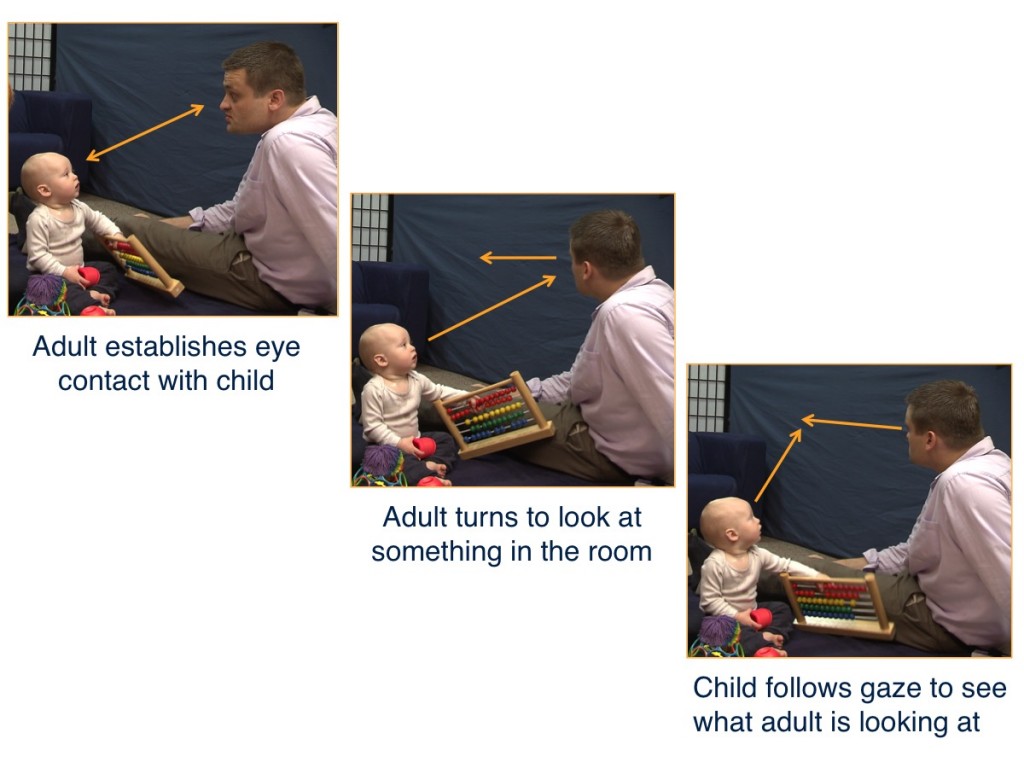
Communication involves more than words and sounds. That’s why children are able to participate in interactions long before they can understand words or talk.
Eye gaze is a form of non-linguistic communication. It establishes a connection between caregiver and child, and helps children learn. In the photos, a father is sitting across from his child. The father first looks at the child, and then turns to look at something behind the child. The child follows his father’s eye gaze to see what he is looking at. This behavior is typical of infants at this age. Research shows that at around 10 months, children begin to understand that eye gaze can be used to communicate.
By the time they’re toddlers, children use people’s eye gaze as signals for what a person is interested in or what they’re talking about. Over time, this helps children learn words for concepts and objects in their environment.
-
- Back-and-forth or contingent interactions
- exchanges in which a caregiver times their responses to a child’s behavior
- Imitation
- observing then reproducing, or copying, a behavior
- Infant-directed speech
- a special tone and style of speech used to talk to young children. It’s also called parentese.
- Scaffolding
- the support a caregiver provides a child to help them achieve more than they would be able to accomplish on their own